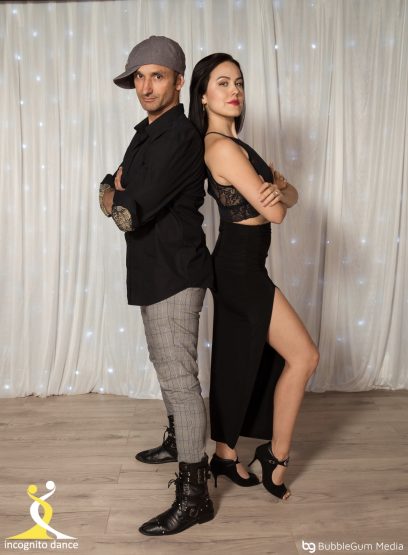Our Dance Fridays Diaries
Wiki Article
An Unbiased View of Dance Fridays
Table of ContentsGetting My Dance Fridays To WorkThe Ultimate Guide To Dance FridaysExcitement About Dance FridaysDance Fridays Fundamentals Explained
Let's consider Salsa dancing and songs as a fantastic large Tree that resembles this: Salsa is danced worldwide while lots of technical facets of the dancing coincide across designs (6 steps over 8 beats danced on a quick-quick-slow or slow-quick-quick rhythm), there are several "characteristic" functions of the main designs of Salsa that identify one from the other.Pairs joining a Casino site Rueda dance all steps in unison as called by a Leader. Distinguishing attributes of Cuban style salsa are round turn patterns (with "break back" actions on counts 1 and 5) as well as body motion motivated by conventional Afro-Cuban folkloric dancings. Distinguishing functions of Cali style salsa fasts and complex maneuvering, danced with a strong hand hold connection in between companions.
The origins of the style are a topic of discussion, but it is stated that New york city style Salsa dancing came from the 1960's because of the increase of Latin American emigrants after the Cuban Revolution. Eddie Torres is one of the most popular New york city style dancer, being nearly universally attributed with promoting the design to dance centres outside of New york city.
The standard rhythm of "On-2" is slow-quick-quick. The "youngest" of the styles of Salsa, L.A. Style (some people have actually called it "West Coast" style) came to be prominent in the 1990's and has its beginnings in ballroom (Mambo, Swing and Cha, Cha, Cha). Transform patterns lead and adhere to strategies are heavily influenced by these styles, with the Cross Body Lead being the cornerstone of the style.
All about Dance Fridays
Style are execution of turn patterns and figures in the "slot", with the break actions on counts "1" and "5". While Salsa songs has solid origins in Cuban, Colombian and Puerto-Rican folkoric traditions, it can not be marked down that all Afro-Latin and Latin American cultures have actually added to contemporary Salsa songs as we understand it today.It's feasible that due to political reasons the contribution of Afro-Cuban society and heritage to contemporary Salsa in the 1960's and 70's is not widely identified, yet it can not be overlooked the huge payment and influence of the "Queen of Salsa", Celia Cruz (salsa club san francisco). Thanks to the net and ease of access to details, the popularity of Salsa music, dancing and culture has actually spread like wildfire over the last 30 years and also then modern Salsa artists proceed to pay tribute to the Founding Fathers and Mom of Salsa.
Today Salsa music is developed, carried out and popular globally. In 2000 the influence of Latin American songs and culture (not simply Salsa) was acknowledged by the National Academy of Recording Arts and Sciences in the U.S (https://www.provenexpert.com/dance-fridays2/). and the Latin Grammy Awards were created. The Latin Grammy's have actually brought focus to the Salsa Legends and contemporary Salsa musicians alike
Not known Details About Dance Fridays
differentiating qualities of Salsa music are: 4/4 time trademark, Child Clave and Tumbao rhythms, Montuno Piano Unless you have a history in songs, the above 3 qualities probably suggest nothing to you. A less complicated method to define Salsa music is exactly how it does NOT seem like other sorts of Latin American popular music.Bachata is a straight 4 beat dancing with a prevalence of a syncopated guitara line and a clear absence of any "hard" piano, brass (trumpet, trombone) lines. Cha, Cha, Cha looks like Salsa songs the most as it feels like "actually slow" salsa/mambo. salsa club san francisco. Cha, Cha, Cha can be differentiated by it's focus of the dual tumbao beat on matters 4 +5 and 8 +1 (the "cha-cha-cha") You've been to a Salsa night at a club and you're addicted you enjoy the music, the energy, the look of 2 professional dancers gliding click here now across the dance floor implementing awesome rotates and transform patterns
Most brand new professional dancers pick to find out L.A. "On-1" style slotted Salsa styles are the most prevalent in North America (with some exceptions of some metropolitan centres that still mainly welcome Cuban and Puerto Rican designs) and L.A
The Ultimate Guide To Dance Fridays
L.A. Style will quickly teach rapidly instruct fundamentals of Salsa timing, weight transfer and turn pattern execution. Many professional dancers, as soon as they have actually had a year or 2 of dancing L.A. Style Salsa under their belts, "button" to New York design in order to diversify their dance vocabulary; yet several professional dancers make a decision to stick to just one design of Salsa and enjoy their time on the dance flooring in that certain style.Style and New York City Style all being danced in the very same club, with a number of the dancers being able to switch over from one design to the other from one song to the following. No matter which style you pick it's crucial to stay with that style till you're extremely comfortable with the principles of timing, body rhythm and foundation move implementation before considering "changing" styles (if you desire to).

Report this wiki page